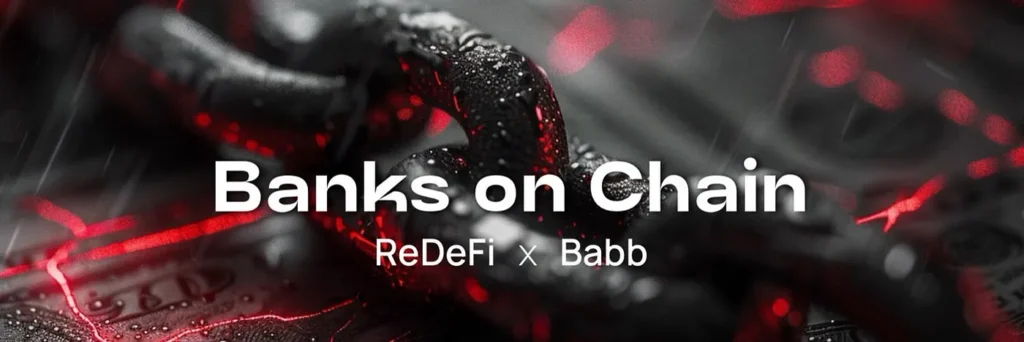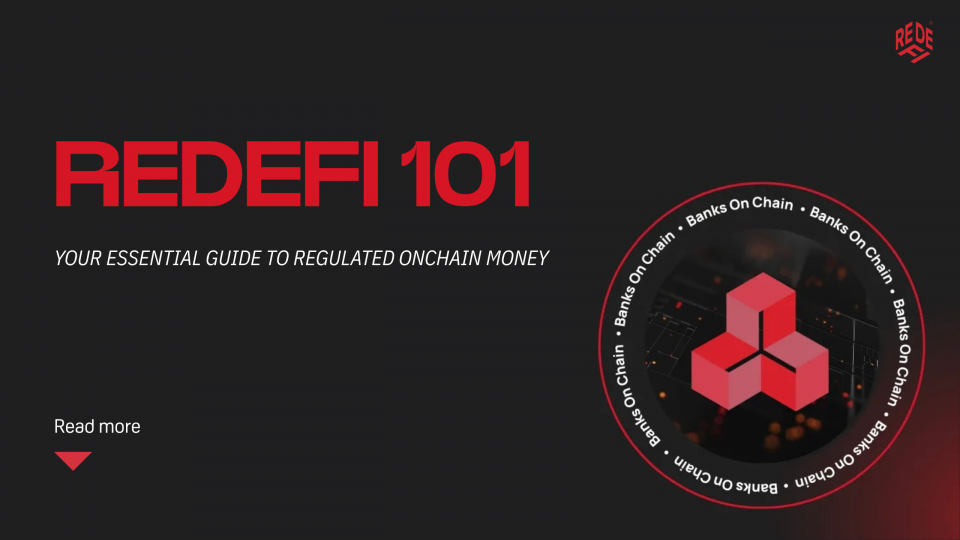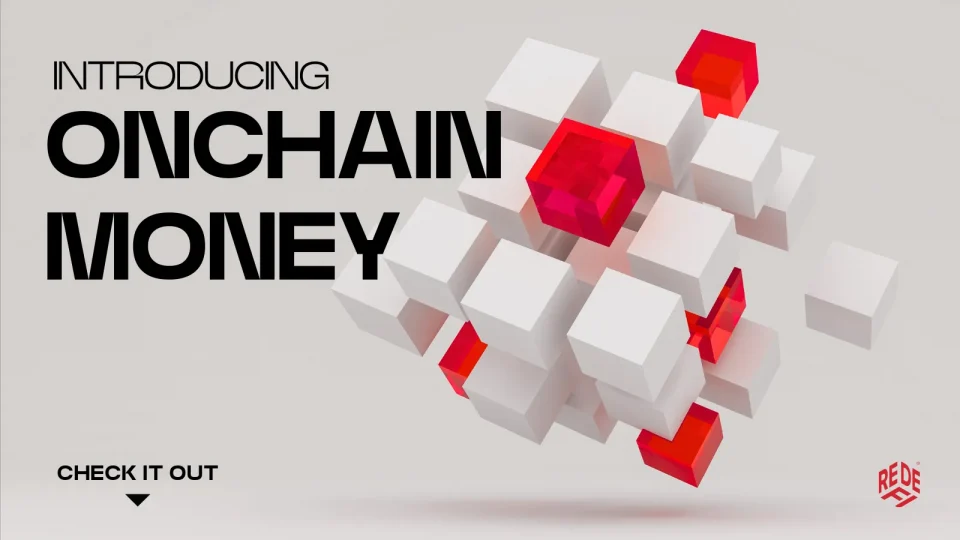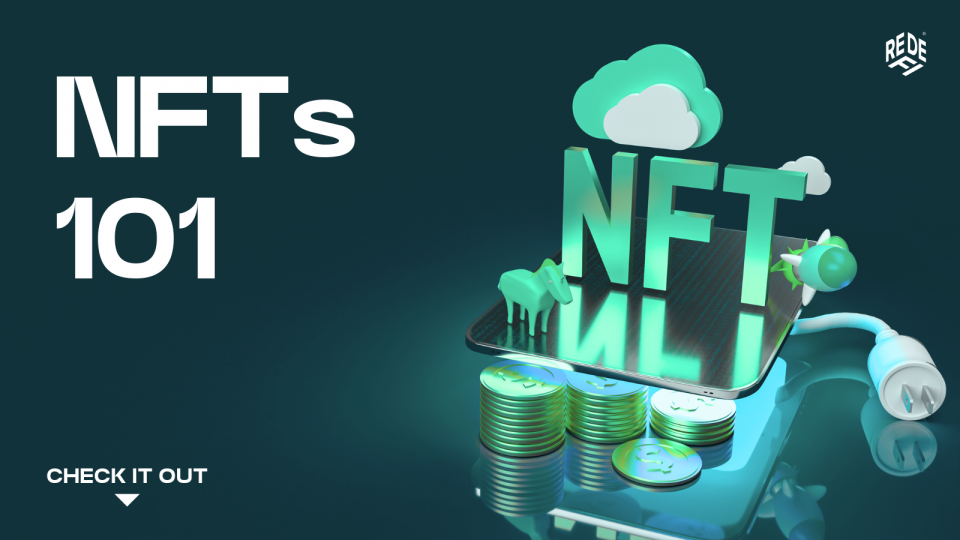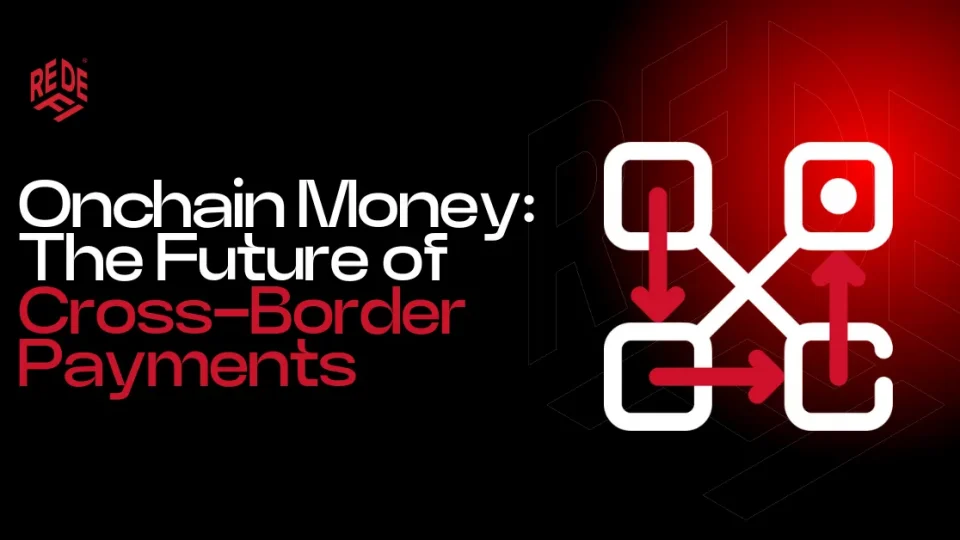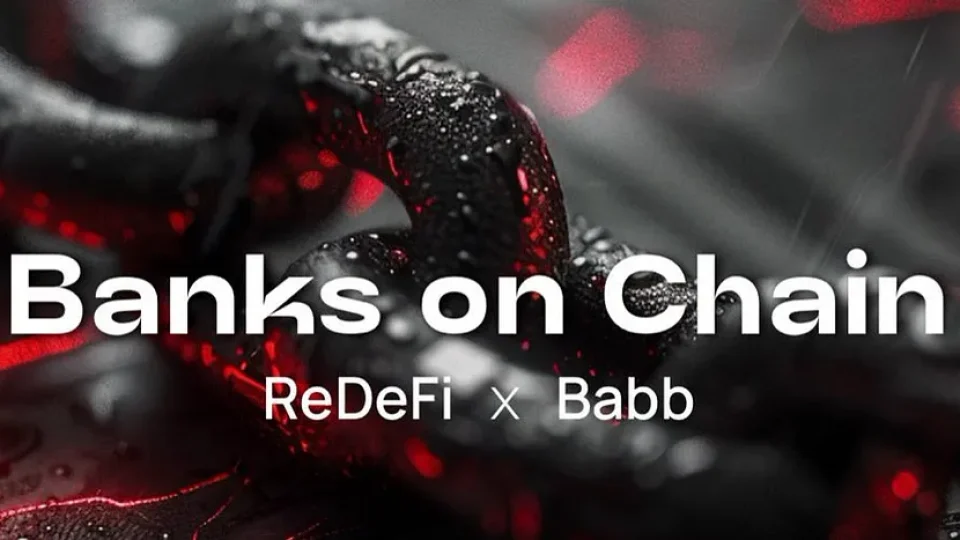Key Insights
- ReDeFi introduces Onchain Money, a tokenised deposit system that bridges traditional and decentralised finance.
- Onchain Money mirrors fiat currencies on-chain, adhering to the “singleness of money’’ principle.
- Onchain Money can be integrated with existing bank accounts to enable fast, secure, and low-cost cross-border transactions.
- Onchain Money empowers businesses with streamlined payments, smart contracts, and access to global markets.
- For financial institutions, it unlocks innovative products and services like tokenised assets and real-time settlement.
- ReDeFi is creating a more inclusive, efficient, and transparent financial ecosystem by bringing Banks on Chain.
- Onchain Money is not a stablecoin, but a true solution for the true future of finance.
I. History of Money — Coins and Paper Money
The story of money begins with the need for a more practical exchange system between people. So, around 600 BC in ancient Greece, the first ‘coins’ were made. These coins were durable, portable, and easily divisible, which solved many issues back then. However, transporting large quantities of coins was not an easy task.
Following the history, we then had ‘paper money’ that originated in China’s Ming dynasty (around 997–1022 CE). By the 13th century, this concept spread to the Middle East and Europe, and by the 18th and 19th centuries, paper money was widely used globally.
Today we call paper money ‘cash or fiat money.’ They have no intrinsic value and aren’t backed by physical commodities like gold or silver. The actual value comes from government decree, making it legal tender for settling debts and taxes. Governments control the money supply to maintain economic stability, adjusting interest rates to manage inflation or deflation.
II. Fiat Money vs. Digital Money
Digital money marked a major evolution in how we use currencies. Today, most transactions are digital, driven by modern technology advancements. Digital money includes funds in bank accounts, digital wallets, and mobile money services. About 69% of adults globally use financial institutions or mobile money providers.
The COVID-19 pandemic accelerated the shift towards digital payments. In 2020, cash accounted for only 1 in 6 transactions in the UK. Asia, particularly India, has seen a surge in digital transactions, with India leading with over $25 billion in digital payments in 2021.
Here we are though, with many different forms of digital money, such as the introduction of CBDCs in various countries, and of course, crypto stablecoins.
Stablecoins like USDC, USDT, etc created to overcome the limitations of traditional currencies and meet the needs of a Web3 economy. But…
III. The Challenges
The financial landscape is in flux. CBDCs emerged as a potential game-changer, yet they face challenges with centralisation concerns and user-accessibility. On the other hand, stablecoins provide a pseudo solution for retail users and crypto natives, but not an actual solution for the global economy.
The lack of comprehensive regulation frameworks creates uncertainty. Many stablecoin issuers operate with limited oversight, raising concerns about their underlying collateral and redemption mechanisms. Fiat-backed stablecoins, while seemingly secure, may not always be fully backed by equivalent reserves, potentially exposing users to unforeseen risks. Algorithmic stablecoins, on the other hand, rely on complex mechanisms that can be vulnerable to market fluctuations and manipulation, leading to rapid devaluations.
Furthermore, the absence of robust insurance or government-backed protections leaves users exposed in case of unforeseen events. It became evident to us, that most native crypto users dislike any centralised currencies (i.e. CBDCs) and retail users, on the other hand, find it hard to interact with DeFi due to its complex mechanics. Nevertheless, despite everyone’s background, people still use stablecoins to ‘’cash-out,’’ right?
IV. The Grassroot of Financial Inclusion — Onchain Money
Enter the ‘MVP’ — Onchain Money — a set of smart contracts that mirror fiat currencies on the blockchain. Think of it as a digital representation of the traditional money we use daily. The beauty of it is it can be integrated through APIs within any existing banking/payment system that wants to position itself better in this evolving market and not stay behind in archaic solutions.
We mentioned, Banks on Chain; yes, it sounds like a ‘buzzword’ at the moment, but what is truly the future of finance? Fancy metal cards? Monthly subscriptions to get perks that most people never use? Creating saving pots to ‘save money’ when global inflation eats it away? Or simply a unified monetary system? What if we tell you that Onchain Money can be the catalyst that connects with every currency around the globe, can be integrated with every institution, every bank, and therefore every existing end-user inside a secure blockchain ecosystem that covers all current regulation policies?
Sit comfy in your chair, lay back for a while and think about these points for a minute. 👆
As a first use case, Clearbank, a long-term partner of BABB (and therefore ReDeFi) will be the first regulated bank testing and integrating Onchain Money in their existing infrastructure. But alas, we have time for that once Onchain GBP launches later this year.
First, you must understand the main difference between stablecoins and Onchain Money.
Stablecoins, (like USDT, USDC) while they have the largest market capitalisation (at the moment), there’ve been many issues in the past with the issuers facing accusations or their pegging mechanisms. From a user perspective though, it’s a medium of exchange. So how are we driving adoption in Web3?
Mark will be our ‘user example’:
- Mark needs to send some ETH to a centralised exchange, i.e. Coinbase, to get some fiat (let’s assume USD). To do that, he needs to pay transaction fees depending on the Ethereum network at the time (usually from $2-$10, depending on the time and amount sent).
- To ‘cash out to his bank,’ Mark needs to get USD in the exchange. So he swaps ETH for USDC first (as that has the lowest fees currently). That’s another fee payment that can vary quite a bit.
- Then Mark needs to swap USDC for USD. Another set of fees here
- As a last step, he can now send USD to his bank account using the Coinbase platform.
As you see, Mark paid several $ in fees to sell his assets and get some fiat money into his bank account. Not to mention this method costs time, multiple transactions that often lead to errors with incorrect wallet addresses etc., just to receive his money.
From a business owner’s perspective:
It’s 2024 and Helen, a textile importer based in New York, needs to pay £35k (roughly $45k at the time) to her supplier in Manchester, UK. The process will look like this:
- Helen contacted her bank to initiate the wire transfer. The bank charged a hefty upfront fee of $45 for the international transaction.
- Since the payment was in GBP, Helen’s bank had to convert her USD to GBP. This applies an unfavourable exchange rate, effectively adding another $250 to the cost.
- The payment didn’t go directly to the supplier’s bank. Instead, it passed through an intermediary bank, which also took a cut of around $100.
- Finally, the supplier’s bank in Manchester charged an incoming wire fee of £15 (roughly $20).
- Beyond these fees, Helen also faced hidden costs due to the fluctuating exchange rates. The entire process took 3 business days, delaying the shipment of her goods and potentially impacting her business operations.
Helen ended up paying around $415 in fees for this single transaction, a significant expense that adds up with time. This example illustrates the challenges businesses face with traditional cross-border payments: high fees, multiple intermediaries, opaque processes, and potential delays. It’s a time-consuming and costly operation that’s ripe for disruption.
Onchain Money is a first-of-its-kind solution that settles in central bank money (GBP, EUR, USD) and doesn’t break the ‘singleness of money’ principle. Rooted in the principles of decentralisation, it not only saves on high fees, hidden costs and all the aforementioned for business owners, large institutions and banks but transactions are performed and stored on a public ledger, ReDeFi blockchain.
To showcase the actual potential, here are a few examples, but you can read a full breakdown with illustrations in our whitepaper:
We’ll illustrate two types of accounts:
– Current Account: A traditional bank account.
– Current Mirroring Account: A bank account with a linked blockchain wallet.
a. Onchain to Onchain Transfer
Scenario: Alice sends money from her Current mirroring account at Bank 1 to Bob’s Current mirroring account at Bank 2.
Before Transfer:
- Alice has £1 in her Current mirroring account at Bank 1.
- This is mirrored as 1 Onchain GBP in the ReDeFi blockchain.
After Transfer:
- Alice’s Onchain GBP token is transferred to Bob.
- £1 moves from Bank 1 to Bank 2, confirmed by the central bank.
b. Traditional to Onchain Transfer
Scenario: Alice sends money from her traditional Current account at Bank 1 to Bob’s Current mirroring account at Bank 2.
Before Transfer:
- Alice has £1 in her Current account at Bank 1.
After Transfer:
- Bank 2 mints 1 Onchain GBP for Bob’s Current mirroring account.
- £1 is transferred from Bank 1 to Bank 2, confirmed by the central bank.
c. Onchain to Traditional Transfer
Scenario: Alice sends money from her Current mirroring account at Bank 1 to Bob’s traditional Current account at Bank 2.
Before Transfer:
- Alice has £1 in her Current mirroring account at Bank 1.
- This is mirrored as 1 Onchain GBP in the ReDeFi blockchain.
After Transfer:
- Bank 1 burns Alice’s Onchain GBP token.
- £1 moves from Bank 1 to Bank 2, confirmed by the central bank.
V. Benefits of Onchain Money
Onchain money offers several significant advantages for modern financial transactions, making them faster, cheaper, and more reliable. Here’s how:
- Reduce Transaction Delays
Traditional cross-border transactions can be slow due to the involvement of multiple banks and intermediaries. Onchain money simplifies this process. With a built-in set of smart contracts that connect with existing banking systems, transactions are completed much faster without the need for manual selection of partners. This means the money reaches its destination faster.
2. Save on Transaction Fees
Onchain Money can significantly reduce transaction costs. In the examples we gave above, there are no fees for a user sending Onchain GBP to a bank account. The only fees are the network fees which are a fraction of a cent. This automation minimises expensive cross-border fees and unfavourable exchange rates, saving costs on every transaction.
3. Confidence with Regulation Policies
ReDeFi platform works with regulated and authorised gateways, since BABB’s partners Clearbank and Modulr are natively ReDeFi’s partners, ensuring that each transaction is secure and compliant with financial regulations. This not only streamlines compliance checks but makes them faster and more reliable. Both the sender and the recipient can trust that the transaction is legitimate and secure since it is verifiable on a public ledger. The beauty for banks and financial institutions is that through the ReDeFi L2 privacy network, their clients’ data is securely stored through cryptographic principles.
VI. Conclusion
ReDeFi and Onchain Money aren’t built to change the current monetary system, (with all its flaws, it’s convenient and globally acceptable). Instead, we want to improve the way banks, financial institutions, businesses and users handle any kind of financial transaction, either B2B or B2C, by making them faster, cheaper, secure and transparent through a decentralised framework of products.
As global digital transactions continue to grow, the need for efficient and reliable payment methods will only increase. Embracing Onchain Money can help businesses stay competitive by reducing transaction costs, improving compliance, and ensuring accurate and transparent transactions.
About ReDeFi
ReDeFi is providing a financial infrastructure platform to bring banks on chain. Our blockchain-based platform enables fast, secure, and low-cost B2B cross-border transactions, unlocking new opportunities for businesses and financial institutions worldwide. With our unique Onchain Money solution, we’re bridging the gap between traditional and decentralised finance by making global transactions for every user more accessible and efficient.
Risk Disclaimer:
Don’t invest in cryptocurrencies unless you’re prepared to lose all the money you invest. This is a high-risk investment, and you should not expect to be protected if something goes wrong. Take 2 mins to learn more.
